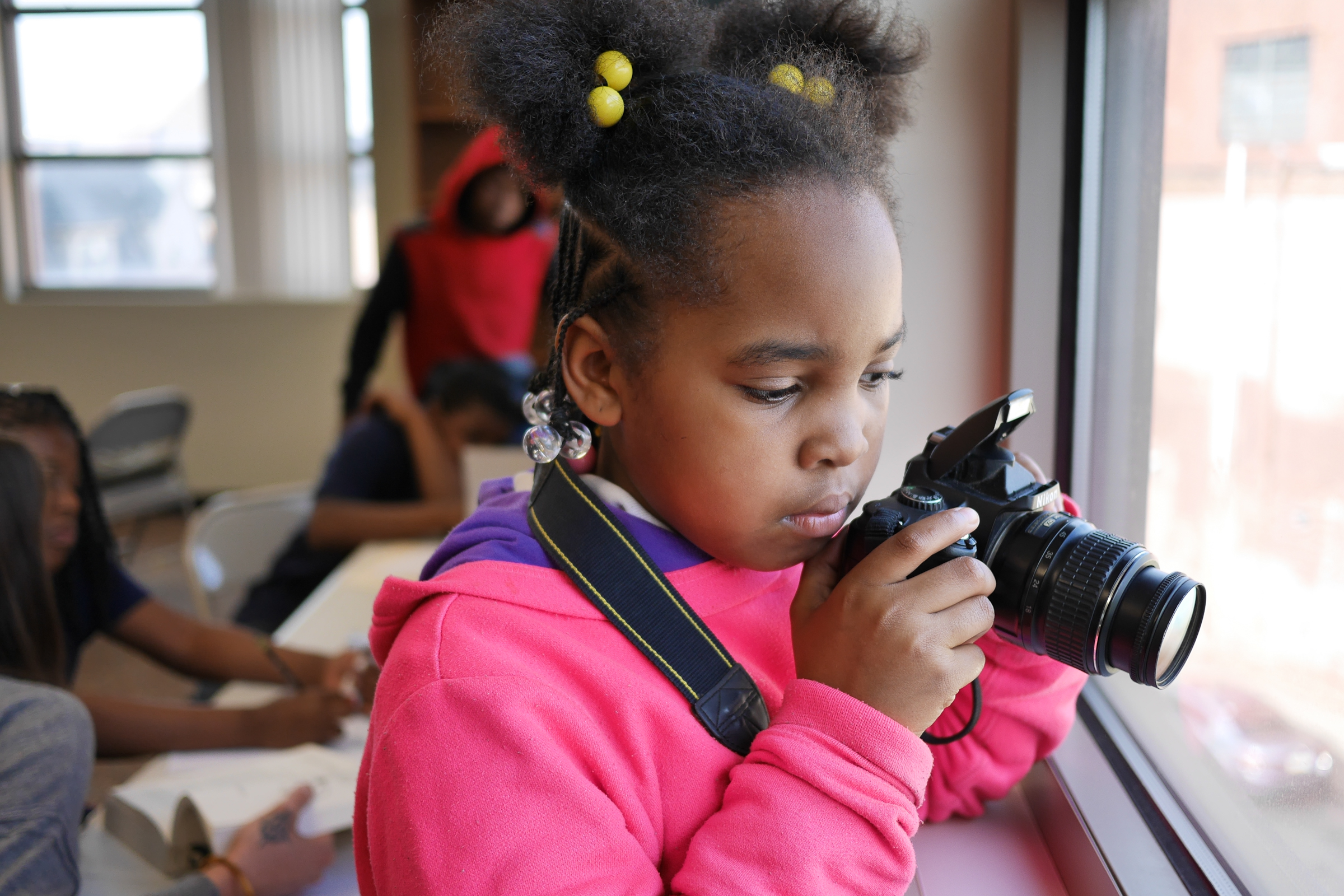After a long day at school, some kids like to go home, put their feet up and watch TV. But at Kingsley Association’s community center in Pittsburgh’s Larimer neighborhood, they’re getting in touch with their local environment instead—through the LUNA Program. The Learning Urban Nature Through Art project is run by environmental artist Ann Rosenthal. And recently, we chatted with Rosenthal about the program and why she sees so much value in bringing the worlds of science and art together.
The Allegheny Front: So what’s been your favorite part of going to the center and working with the kids?
Ann Rosenthal: What I love to see is kids fully present and fully engaged in what they’re doing. I started taking botanical art classes five years ago, and one of the things I loved is that it totally consumes you. When you’re looking at a plant and you’re looking at every detail and nuance, you’re in another world. When I see kids in that state, that makes me really happy. It makes me feel like I’ve hit the mark.
LISTEN: “Where Art Meets Ecology”
AF: So one of the goals of the program is to create “eco-literacy.” What exactly is that?
AR: Well, eco-literacy is an understanding of the natural world. And in particular, for me, it has to do with systems thinking. Our education system, the way it has evolved, everything is in its own little box. You’ve got science, you’ve got art, you’ve got literature—and there’s no connecting them. But in the real world, it’s all mixed up and it’s all connected. And it’s become a big problem in the world today—the lack of systems thinking—because to solve the environmental and social problems that we’re facing, you need to draw on a lot of different disciplines. For instance, we talk about pollinators and their relationship to plants. That’s very small, but it’s a very intricate system. And maybe if the students walk away with just that one little idea, it’ll spark their thinking about how other things connect.

For Pittsburgh artist Ann Rosenthal, art can be a powerful tool for understanding ecology. Photo: Kara Holsopple
AF: So what are the kids actually working on in this program?
AR: Well, the community said they would like to know more about what plants and trees are best suited for the urban environment where they live and what they should be planting that would be right for creating more native habitat. So the first session is learning about the plants and pollinators and doing drawings. And then the drawings are used to create banners that will go up in the neighborhood. And then in the fall, the plan for the kids is to use these drawings to create a planting guide. One of my premises is that a way to process knowledge is through art. So kids learn about nature and ecology and our place within the natural world and then they make art about that. And that helps make the knowledge theirs. I would be thrilled if they came away from the program and said, “I want to learn more.” That’s the most important thing: That they see there’s a whole world out there of green stuff and plants and animals and want to know more.
###
Ann Rosenthal is an artist with the after-school LUNA Program in Pittsburgh, which teaches kids about nature through art.

